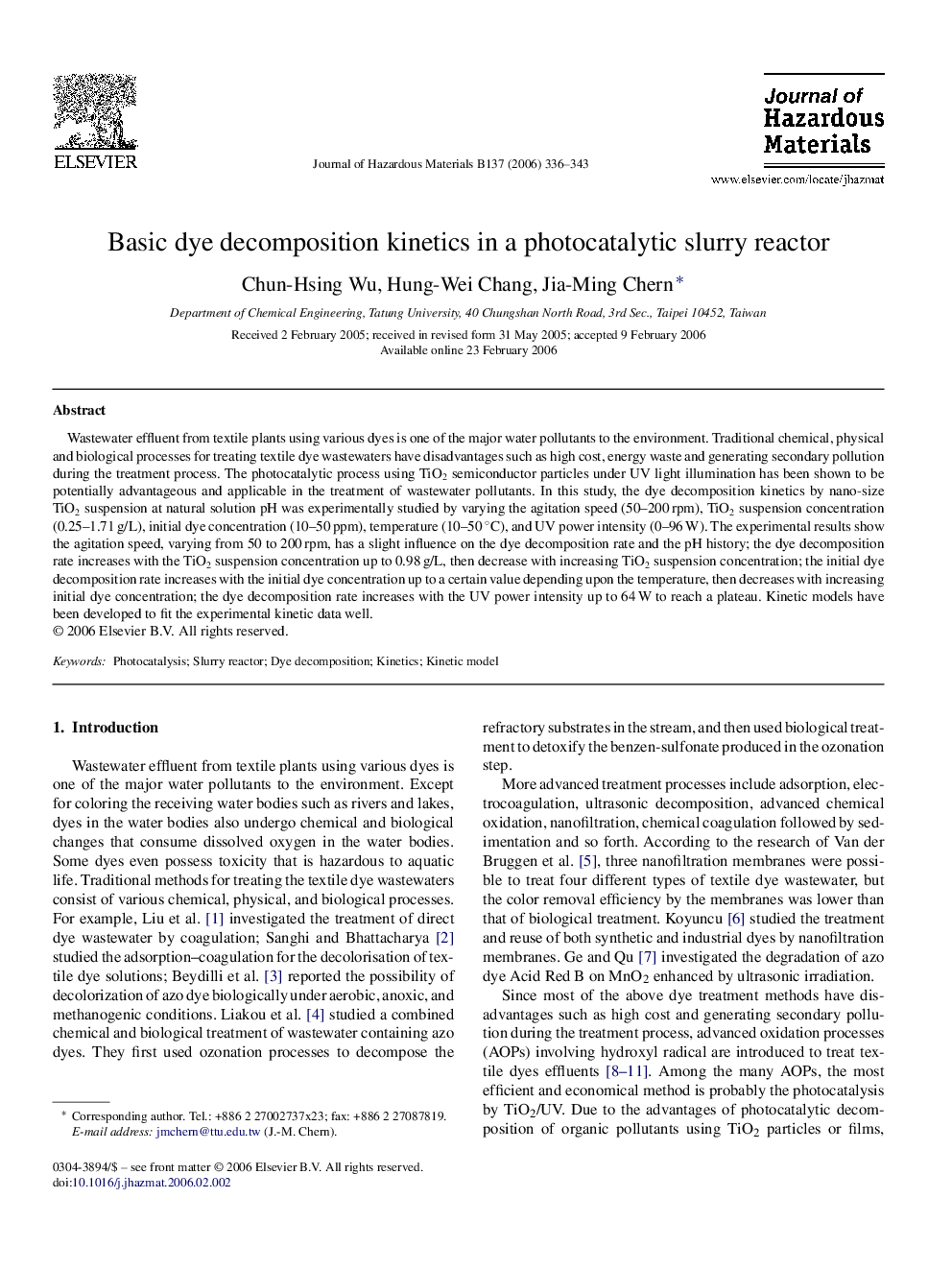| Article ID | Journal | Published Year | Pages | File Type |
|---|---|---|---|---|
| 585459 | Journal of Hazardous Materials | 2006 | 8 Pages |
Abstract
Wastewater effluent from textile plants using various dyes is one of the major water pollutants to the environment. Traditional chemical, physical and biological processes for treating textile dye wastewaters have disadvantages such as high cost, energy waste and generating secondary pollution during the treatment process. The photocatalytic process using TiO2 semiconductor particles under UV light illumination has been shown to be potentially advantageous and applicable in the treatment of wastewater pollutants. In this study, the dye decomposition kinetics by nano-size TiO2 suspension at natural solution pH was experimentally studied by varying the agitation speed (50-200 rpm), TiO2 suspension concentration (0.25-1.71 g/L), initial dye concentration (10-50 ppm), temperature (10-50 °C), and UV power intensity (0-96 W). The experimental results show the agitation speed, varying from 50 to 200 rpm, has a slight influence on the dye decomposition rate and the pH history; the dye decomposition rate increases with the TiO2 suspension concentration up to 0.98 g/L, then decrease with increasing TiO2 suspension concentration; the initial dye decomposition rate increases with the initial dye concentration up to a certain value depending upon the temperature, then decreases with increasing initial dye concentration; the dye decomposition rate increases with the UV power intensity up to 64 W to reach a plateau. Kinetic models have been developed to fit the experimental kinetic data well.
Related Topics
Physical Sciences and Engineering
Chemical Engineering
Chemical Health and Safety
Authors
Chun-Hsing Wu, Hung-Wei Chang, Jia-Ming Chern,
